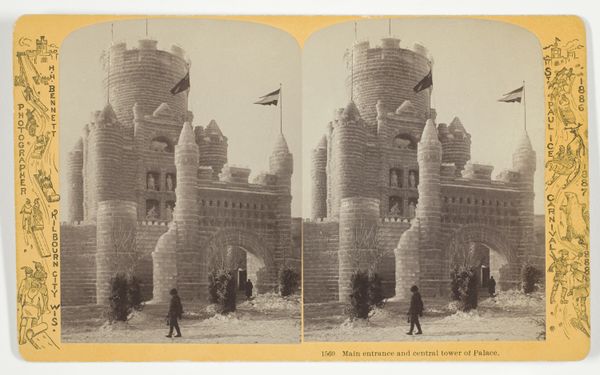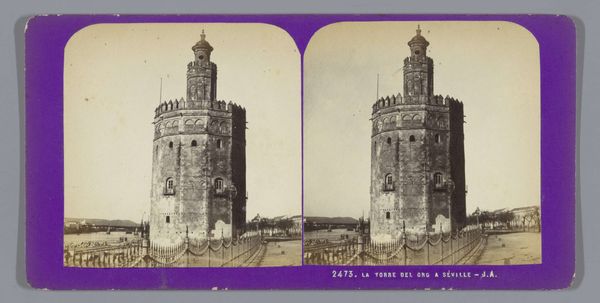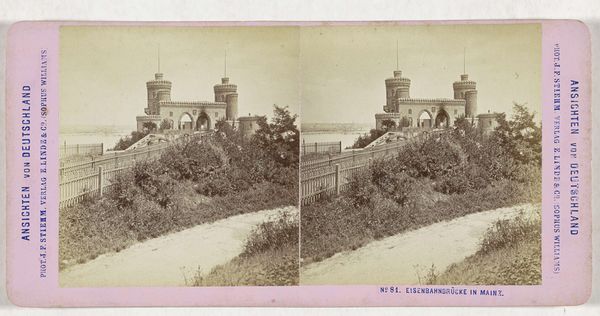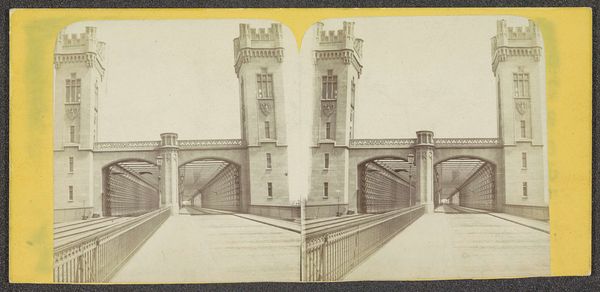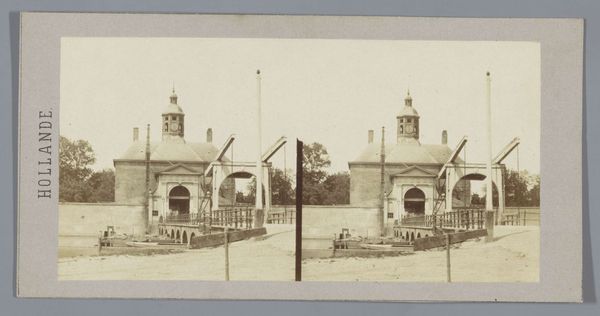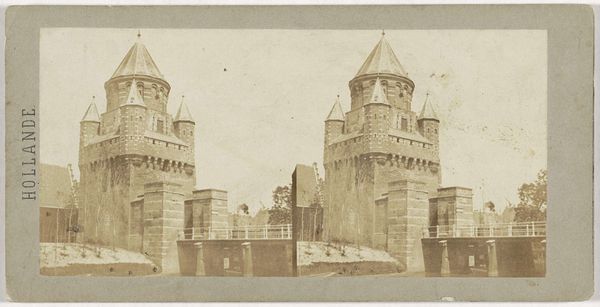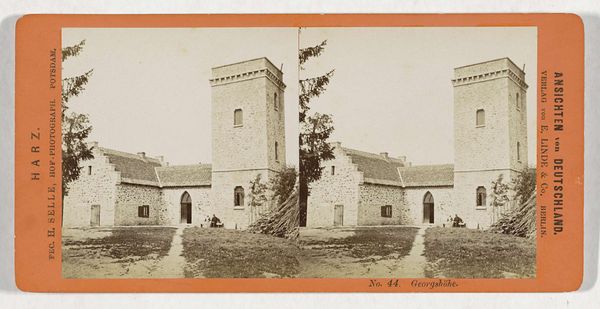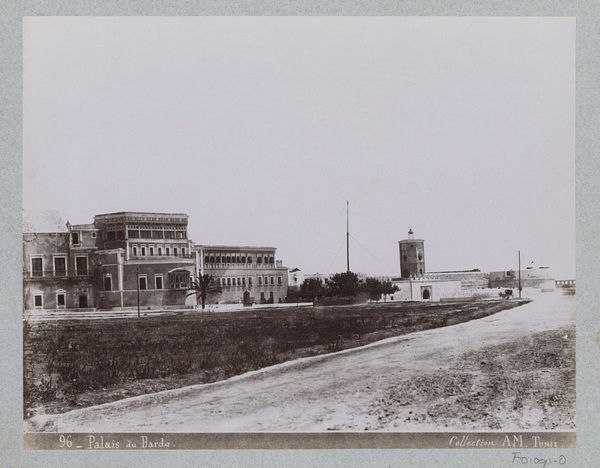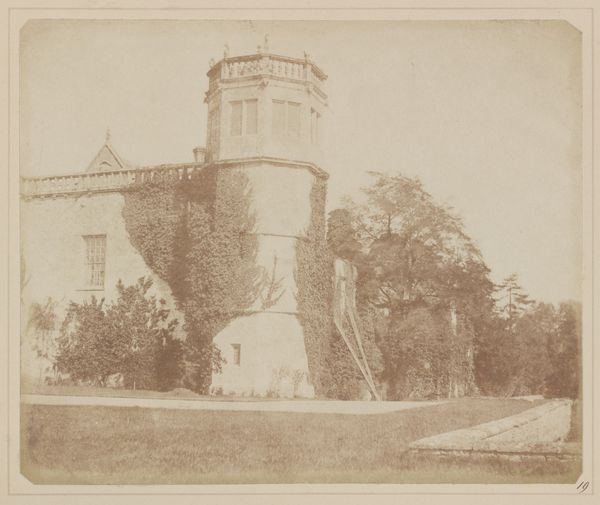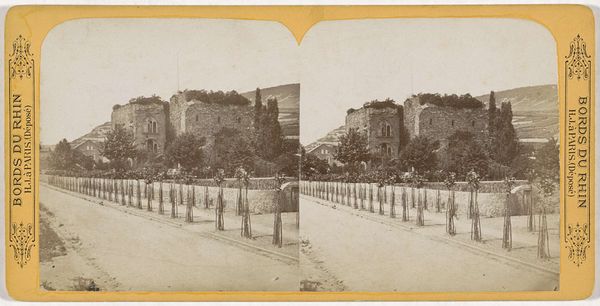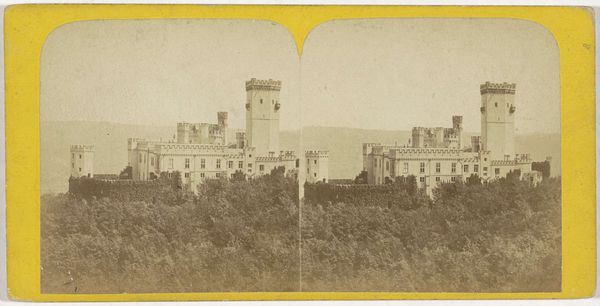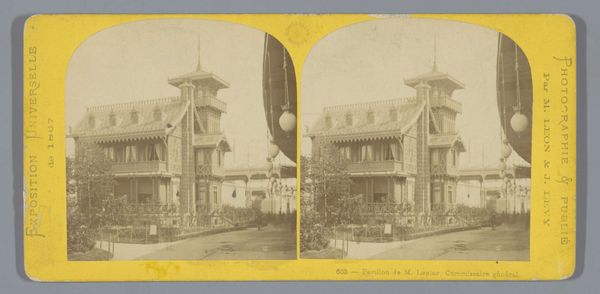
print, photography, albumen-print
# print
#
photography
#
ancient-mediterranean
#
orientalism
#
cityscape
#
albumen-print
Dimensions: height 88 mm, width 180 mm
Copyright: Rijks Museum: Open Domain
Curator: Richard Sochor's photograph, “Entree van de Delta Barrage, Egypte,” created around 1903, presents a compelling view of a prominent Egyptian landmark. It's rendered in the subtle tones of an albumen print. Editor: It evokes such a sense of stark, monumental presence! The verticality, especially emphasized by the tower, and the subdued monochromatic palette contribute to an impression of immense scale and age. Curator: Absolutely, and it’s crucial to remember this image comes from a time of significant European interest in Egypt. These photographs served to visually "possess" and document colonial power. Editor: I can see that, but there's also a certain clarity in the composition itself that shouldn’t be dismissed. The way the converging lines of the tracks lead the eye directly towards the arched entrance and the interplay of light and shadow – they create a strong visual hierarchy. Curator: Well, those compositional elements also reinforce the power dynamic. Framing the “exotic” for Western consumption. It's not just about aesthetics, it is about exerting dominance. The albumen print gives it an archaic romanticism. Editor: But even that "archaic romanticism," as you call it, carries inherent formal qualities: the softening of detail, a slight atmospheric diffusion – that contributes to the dreamlike quality. It invites contemplation. Curator: Perhaps, but that "invitation" should be viewed critically. This barrage was built during a period of British control. The photo implicitly celebrates colonial engineering. The "contemplation" it inspires should acknowledge that history. Editor: A valid point! Seeing these structural lines and gradations reminds me to appreciate that the photo offers much more than just a reflection of its time period, it captures and contains the power of its subject. Curator: A fair point. Seeing this piece has broadened my view and encouraged me to more closely reflect on my historical lens, looking at not only context, but the aesthetic considerations of the artwork. Editor: And in considering its setting and circumstance, this photograph, like many other artworks of the era, prompts us to re-evaluate our present circumstances and aesthetic value judgments.
Comments
No comments
Be the first to comment and join the conversation on the ultimate creative platform.
